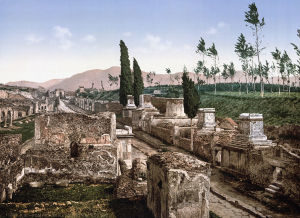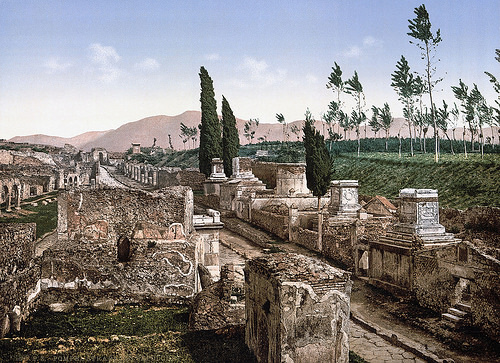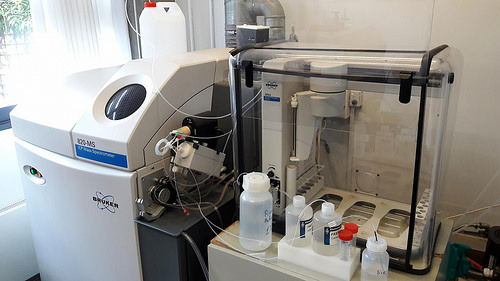
UNIVERSITY OF SOUTHERN DENMARK—The ancient Romans were famous for their advanced water supply. But the drinking water in the pipelines may have been poisoned on a scale that could have led to daily problems like vomiting, diarrhoea, and liver and kidney damage. This is the finding of analyses of water pipe from Pompeii.
University of Southern Denmark chemist Kaare Lund Rasmussen, a specialist in archaeological chemistry, revealed through the analysis of a piece of water pipe from Pompeii that the pipes contained high levels of the toxic chemical element, antimony.
The result has been published in the journal Toxicology Letters.
Romans poisoned themselves
For many years, archaeologists believed that the Romans’ water pipes were problematic when it came to public health. After all, they were made of lead: a heavy metal that accumulates in the body and eventually shows up as damage to the nervous system and organs. Lead is also very harmful to children. So there has been a long-lived thesis that at least some Romans poisoned themselves to a point of ruin through their drinking water.
However, this thesis is not always tenable. A lead pipe gets calcified rather quickly, thereby preventing the lead from getting into the drinking water. In other words, there were only short periods when the drinking water was poisoned by lead: for example, when the pipes were laid or when they were repaired: assuming, of course, that there was lime in the water, which there usually was, says Kaare Lund Rasmussen.
Instead, he believes that the Romans’ drinking water may have been poisoned by the chemical element, antimony, which was found mixed with the lead.
Advanced equipment at SDU
Unlike lead, antimony is acutely toxic. In other words, you react quickly after drinking poisoned water. The element is particularly irritating to the bowels, and the reactions are excessive vomiting and diarrhoea that can lead to dehydration. In severe cases it can also affect the liver and kidneys and, in the worst-case scenario, can cause cardiac arrest.
A small metal fragment of 40 mg, which Rasmussen obtained from a French colleague, Professor Philippe Charlier of the Max Fourestier Hospital, was analysed. “The fact is that we have some particularly advanced equipment at SDU, which enables us to detect chemical elements in a sample and, ever more importantly, to measure where they occur in large concentrations,” said Rasmussen.
___________________________________________
Pompeii was supported by a sophisticated water pipe system. Wikimedia Commons
____________________________________________________________
The technology used to analyze the lead pipe sample at the University of Southern Denmark. Credit: SDU
___________________________________________________________
Volcano made it worse
Rasmussen emphasizes that he only analysed one small fragment of water pipe from Pompeii. He says it will take several analyses before scientists can get a more precise picture of the extent to which Roman public health was affected.
But there is no question that the drinking water in Pompeii contained alarming concentrations of antimony, and that the concentration was even higher than in other parts of the Roman Empire, because Pompeii was located in the vicinity of the volcano, Mount Vesuvius. Antimony occurs naturally in groundwater near volcanoes.
Article Source: Adapted and edited from the University of Southern Denmark news release
_________________________________________________________
Receive 30 days free access to the popular new CuriosityStream lineup of documentaries on science, history, nature, and technology as a new Popular Archaeology premium subscriber.
___________________________________________
Travel and learn with Far Horizons.
____________________________________________
This richly illustrated issue includes the following stories: Recent findings shedding new light on the whereabouts of the remains of Philip of Macedon, father of Alexander the Great; how an archaeologist-sculptor is bringing bones of the dead back to life; archaeologists uncovering town life at the dawn of civilization; an exclusive interview with internationally acclaimed archaeologist James M. Adovasio about what makes the Meadowcroft Rockshelter prominent in the ongoing search for the first Americans; what archaeologists are finding at the site of the ancient city of Gath, the home town of the biblical Philistine giant, Goliath; and how scientists are redrawing the picture of human evolution in Europe. Find it on Amazon.com.









